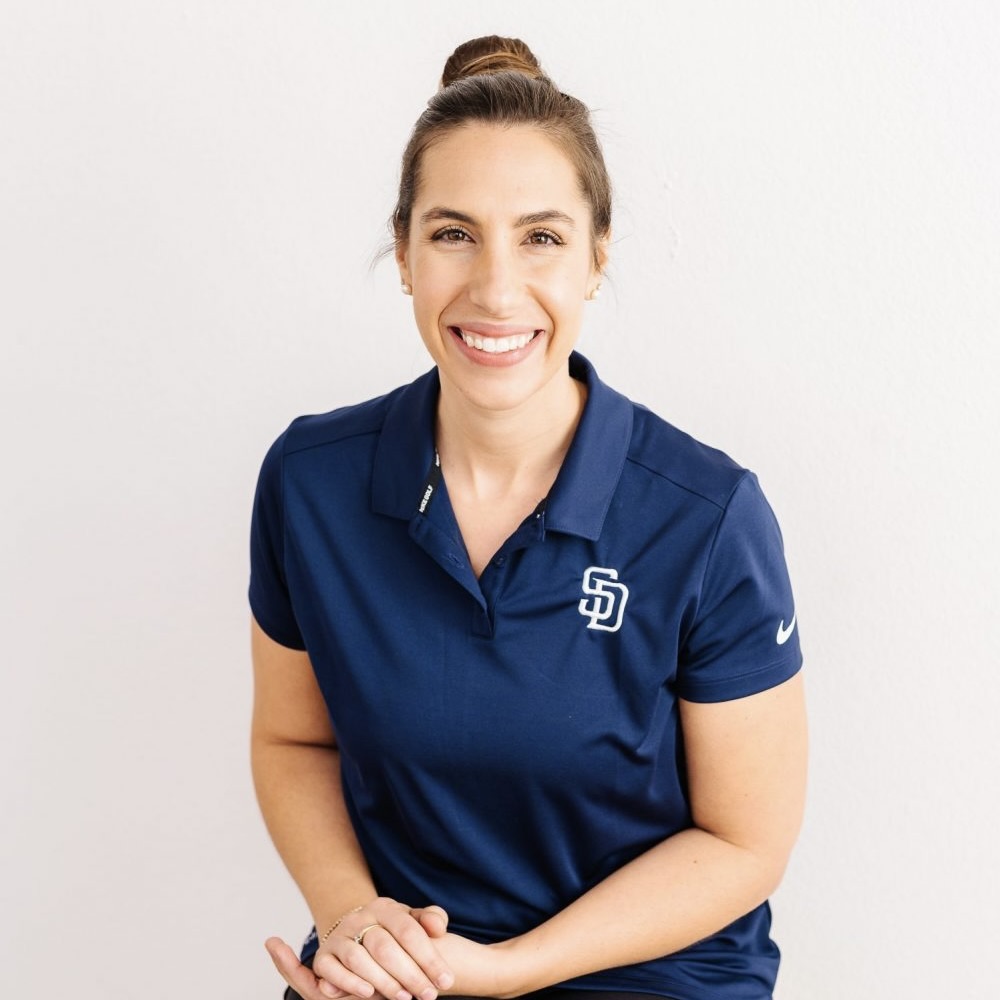Chiropractic by definition means ‘by hand,’ but today, we do so much more than just adjusting the spine. We’re looking at the entire body to treat dysfunction at its root.
Dr. Meg Byrne, DC
What You will learn
- How chiropractic care has evolved to include holistic approaches like acupuncture, nutrition, and functional medicine.
- Common misconceptions about chiropractic care and how modern practitioners provide comprehensive assessments and treatments.
- The differences between acupuncture and dry needling, and how both can be used to treat pain and dysfunction.
- The role of fascia and the nervous system in pain management and how manual therapy addresses these connections.
- An introduction to Pulsed Electromagnetic Field (PEMF) therapy and its applications for pain relief and recovery.
In the latest episode of Finding Small Wins, Dr. Adam Loiacono sat down with two Unlocking the Power of Chiropractic Care: A Holistic Approach to Health with Dr. Meg Byrne
In a fascinating episode of Finding Small Wins, Dr. Adam Loiacono welcomes Dr. Meg Byrne, a chiropractic physician with an integrative approach to care that expands far beyond the traditional role of a chiropractor. Dr. Byrne, who also holds a master’s degree in nutrition and functional medicine, offers a unique perspective on how chiropractic care can be leveraged to address not only musculoskeletal dysfunction but also systemic health conditions. The conversation delves into the evolution of chiropractic care, misconceptions about the field, and how modern techniques such as acupuncture, dry needling, and Pulsed Electromagnetic Field (PEMF) therapy are used in her practice to achieve optimal patient outcomes.
The Evolution of Chiropractic Care
One of the major themes of the episode is the evolution of chiropractic care, a field often misunderstood by the general public. Chiropractic care originated in the late 1800s with the primary focus on spinal manipulation to influence the nervous system. Over time, however, the field has expanded significantly. As Dr. Byrne points out, today’s chiropractic care encompasses a much broader scope of practice that includes joint manipulation, soft tissue mobilization, nutritional assessments, and even lab testing to address systemic issues.
Dr. Byrne explains how the field is divided into various schools of thought, with some chiropractors adhering to the traditional philosophy that focuses solely on spinal adjustments. Others, like Dr. Byrne, take a more integrative approach by utilizing every tool within their scope of practice. For Dr. Byrne, this includes acupuncture, functional medicine, and nutritional guidance, allowing her to provide a holistic treatment plan that addresses both the symptoms and underlying causes of dysfunction.
Debunking Common Misconceptions
A significant part of the conversation revolves around debunking common misconceptions about chiropractic care. Dr. Byrne addresses the stereotype that chiropractors are simply “bone crackers” who provide temporary relief through forceful joint manipulations. While spinal adjustments are part of the practice, chiropractic care goes far beyond that. Dr. Byrne emphasizes that a comprehensive assessment, including a detailed history and a neurological exam, is crucial before any form of manipulation or therapy is administered.
The biggest misconception is that chiropractors only ‘crack’ joints, but the reality is a good chiropractor performs a full neurological and physical exam before any treatment.
Dr. Meg Byrne, DC
One particularly pervasive myth is the belief that chiropractic adjustments, particularly neck manipulations, can cause strokes. Dr. Byrne acknowledges that any force applied to a damaged or hypermobile area of the body can exacerbate the issue. However, she stresses that skilled chiropractors perform thorough examinations to identify any red flags or contraindications before proceeding with an adjustment. In this sense, chiropractic care should be seen as both safe and effective when delivered by a qualified practitioner.
Manual Therapy Techniques
The conversation dives deep into the various manual therapy techniques Dr. Byrne uses in her practice. She explains that manual therapy can take many forms, from joint manipulation and mobilization to soft tissue techniques like scraping, cupping, and fascial release. Dr. Byrne believes in addressing the body layer by layer, first identifying whether the dysfunction is acute or chronic, and then applying the appropriate treatment to support the tissue’s natural healing process.
One technique that Dr. Byrne highlights is the use of activators, small mechanical devices that provide high-velocity, low-amplitude adjustments. These tools are especially useful for patients who are sensitive to traditional manipulations or for treating delicate areas like the pubic bone or ribs. This less invasive method allows chiropractors to influence joint mobility without the need for forceful adjustments, making it an excellent option for patients with conditions like costochondritis or hypermobility.
Acupuncture and Dry Needling: What’s the Difference?
Another fascinating aspect of Dr. Byrne’s practice is her integration of acupuncture and dry needling. Though both techniques involve needles, their goals and philosophies differ significantly. Acupuncture, rooted in ancient Chinese medicine, focuses on stimulating specific nerve-rich points along the body’s meridians to influence the flow of “chi,” or energy, throughout the body. This approach is not limited to musculoskeletal issues but can also address systemic conditions like digestive problems, anxiety, and even pregnancy-related concerns.
Acupuncture and dry needling may both use needles, but they’re vastly different in how they treat pain. Acupuncture focuses on the body’s energy flow, while dry needling targets specific musculoskeletal dysfunctions.
Dr. Meg Byrne, DC
In contrast, dry needling is a more modern technique aimed specifically at treating musculoskeletal pain by targeting trigger points and tight muscles. While acupuncture has a more holistic approach, dry needling is direct, targeting the dysfunctional tissue itself. Dr. Byrne often uses dry needling in combination with other manual therapies to release muscle tension and restore range of motion.
The Role of the Nervous System
The nervous system plays a pivotal role in Dr. Byrne’s approach to chiropractic care. She emphasizes that every manual therapy technique, from joint manipulation to soft tissue work, aims to influence the nervous system. Whether it’s stimulating nerve-rich acupuncture points or adjusting the spine to improve nerve communication, the goal is to restore the body’s natural ability to heal and function properly.
Fascial Connections and Pain
One of the key insights Dr. Byrne shares is the role fascia plays in pain and dysfunction. Fascia is the connective tissue that surrounds muscles, joints, and organs, and it plays a crucial role in how our bodies move and function. According to Dr. Byrne, dysfunction in one area of the body can often be traced to issues in the fascia, which can affect everything from joint mobility to chronic pain.
Fascia plays a massive role in chronic pain. Dysfunction in one part of the body can create a ripple effect, causing pain elsewhere due to the interconnectedness of the fascia and nervous system.
Dr. Meg Byrne, DC
Dr. Byrne cites a recent study showing that fascia shares innervation with other structures in the body, meaning that pain in one area can be a result of fascial dysfunction elsewhere. For example, someone experiencing knee pain might have tightness or dysfunction in the muscles and fascia of the hips or ankles. This understanding underscores the importance of treating the body as an interconnected system rather than focusing solely on the site of pain.
Integrative Medicine in Practice
Dr. Byrne’s practice is not limited to hands-on techniques. She also integrates functional medicine, which looks at the root causes of chronic conditions by addressing systemic imbalances. For example, a patient experiencing joint pain might also be suffering from systemic inflammation due to poor nutrition, gut health issues, or autoimmune conditions. By addressing these underlying factors through lab testing, nutritional interventions, and supplements, Dr. Byrne can provide a more comprehensive treatment plan that goes beyond symptom management.
Pulsed Electromagnetic Field (PEMF) Therapy
Towards the end of the episode, Dr. Byrne introduces PEMF therapy, one of her favorite new modalities. PEMF uses electromagnetic fields to re-energize low-energy cells, promoting healing and reducing pain. The therapy is FDA-approved for certain conditions, such as non-union bone fractures and depression, but Dr. Byrne uses it more broadly to help her patients recover faster and manage chronic pain. She is quick to point out that not all PEMF devices on the market are equally effective, urging patients to seek out reputable technology that delivers the right frequency and intensity for therapeutic benefits.
Sports Chiropractic: Enhancing Performance and Recovery
Dr. Byrne’s experience working with athletes also shines through in the episode. She discusses how chiropractic care can be a valuable tool for both injury recovery and performance enhancement in sports. Whether she’s working with an athlete in the training room or in her private practice, Dr. Byrne tailors her treatment plans to meet the specific demands of the sport, adjusting the intensity of care depending on the athlete’s game schedule and recovery needs.
Conclusion: A Holistic Approach to Health
This episode of Finding Small Wins with Dr. Meg Byrne highlights the growing role of chiropractic care in modern healthcare. By integrating techniques like acupuncture, manual therapy, and PEMF, Dr. Byrne demonstrates how chiropractors can offer more than just spinal adjustments. Her holistic approach, which includes functional medicine and a deep understanding of the nervous system, allows her to treat the whole person, addressing both the symptoms and the root causes of dysfunction. This episode is a must-listen for anyone interested in chiropractic care, holistic health, and the power of integrative medicine.
Listen here – Finding Small Wins Podcast:
Dr. Meg Byrne: Beyond Adjustments – Understanding the Full Scope of Chiropractic Care
10 Key Takeaways
- The Evolution of Chiropractic Care: Dr. Byrne explains the historical origins of chiropractic care and how the field has expanded beyond spinal adjustments to include a broader scope of practice.
- Misconceptions About Chiropractors: Addressing common misconceptions, such as the belief that chiropractors only “crack” joints, and emphasizing the diagnostic and holistic approach of modern chiropractic care.
- Manual Therapy Techniques: A deep dive into the different types of manual therapy, including joint manipulation, soft tissue mobilization, and the use of tools like activators for gentle adjustments.
- Chiropractic vs. Physical Therapy: Discussion on the similarities and differences between chiropractic and physical therapy, especially regarding their approaches to manual therapy and exercise prescription.
- Acupuncture and Dry Needling: Explaining the differences between acupuncture’s traditional, holistic approach and dry needling’s focus on musculoskeletal trigger points.
- Fascial Connections and Pain: Dr. Byrne discusses how fascia, nerves, and muscles are interconnected and how dysfunction in one area can lead to pain elsewhere in the body.
- The Role of the Nervous System: Emphasizing the importance of the nervous system in influencing musculoskeletal health and how chiropractic care aims to optimize its function.
- Integrative Medicine: How Dr. Byrne incorporates functional medicine, acupuncture, lab testing, and nutritional assessments into her chiropractic practice to address systemic health issues.
- Pulsed Electromagnetic Field (PEMF) Therapy: Introduction to PEMF therapy, its applications in reducing pain, promoting healing, and its FDA recognition for specific conditions like bone fractures and glioblastoma.
- Sports Chiropractic Care: Insights into Dr. Byrne’s experience working with athletes, adjusting care protocols based on game schedules, and integrating chiropractic care into sports rehabilitation.
episode timeline
00:00 Introduction and Origin Story
02:23 Understanding Chiropractic Philosophy
12:22 Debunking Chiropractic Misconceptions
18:04 Approach to Manual Therapy
28:12 Acupuncture vs. Dry Needling
36:25 Teaser on PEMF Therapy



